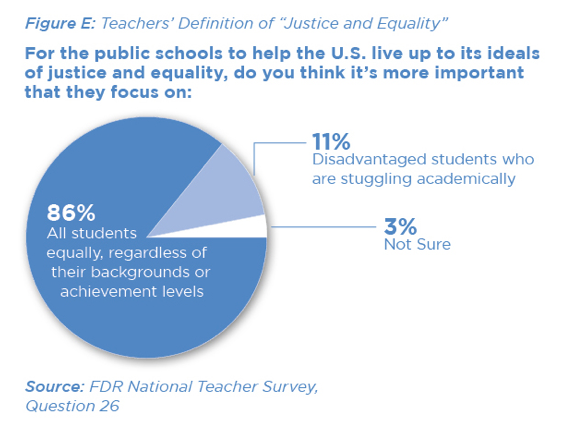One of the dirtiest words in American education today is “tracking.” Reformers and ed-school types alike deride the approach as racist, classist, and worthy of eradication. And if they are talking about the practice of confining some kids—typically poor or minority or both—into dead-end tracks with soulless, ditto-driven instruction, they are absolutely right.
But they are dead wrong when they call for elimination of tracking en toto—of removing all “honors” courses, of putting all agemates in the same class regardless of their level of preparedness. That’s a recipe for failure for kids of all achievement levels—and more proof that today’s policy discussion is often devoid of common sense.
It doesn’t take a rocket scientist—or even a cognitive scientist—to know that kids (and adults) learn best when presented with material that is challenging—neither too easy so as to be boring nor too hard as to be overwhelming. Like Goldilocks, we want it just right. Grouping kids so that instruction can be more closely targeted to their current ability levels helps make teaching and learning more efficient.
Thankfully, we’re getting close to going beyond tracking—not by grouping all kids together, but by moving in the opposite direction, by customizing instruction to individual students. With the advent of online-learning technologies and more targeted assessments, schools are discovering ways to pinpoint exactly what students know and serve up instruction that meets them there.
Models like School of One are starting to deliver on that vision. At School of One, a middle school math program in New York City, students are placed in specific learning modules based on their performance the previous day, and on a sophisticated algorithm. Some kids are sent to small-group instruction with similarly-abled peers; others head to one-on-one online tutoring; others work independently on a computer; others get more traditional classroom instruction. It’s all customized to match the students’ needs and abilities. (Read more about School of One and other models of individualized instruction in this excellent Education Next article.)
Proponents of detracking want to erase all of this progress. Kevin Welner, a professor at the University of Colorado, Boulder and Carol Burris, principal of a detracked Long Island high school, have gone so far as to present a policy brief pushing for states to ban student tracking. They argue that heterogeneous classrooms will lift all boats, ensuring that all students are afforded one “high caliber” level of instruction. That sounds great, but what if some kids are six grade levels ahead of their peers—adeptly solving proofs while their classmates struggle with long division?
Of course, we don’t organize much of high school life this way. We have “tracking” in extracurriculars. The most talented basketball players hit the court together on varsity. The lesser skilled adolescents don JV jerseys. The same goes for foreign-language instruction. Those on the way to learning Spanish enroll in, say, Español IV, not Spanish I. But, with forced detracking, those talented in math are corralled into classrooms with lower-achievers to sit through 180 days of potentially under-stimulating instruction.
Why do we discriminate against academically talented kids this way? Because “social justice” demands it, detracking proponents argue. Tracking, they say, perpetuates our society’s pernicious divides. And, by default, detracking will close them.
This is a difficult issue. It’s true that schools serving both affluent and poor students will tend to face huge achievement gaps. Narrowing these gaps—by bringing up the achievement of the kids who are behind, not by suppressing the achievement of the top students—is absolutely a worthy goal. But “social justice” shouldn’t require us to adopt a policy that could do material harm to a broad swath of American children. And, based on a survey we administered to teachers a few years back, they agree. (See Figure E.)

But in the detracking debate, that’s what we’re talking about: asking students who are gifted in math or literature or science to expend precious learning time helping other kids develop basic skills. In doing so, we’re ignoring the needs of our strongest students—and we aren’t doing our struggling students any favors.
Surely no child should be put in a classroom where she isn’t challenged. The detracking contingent has that right. But it shouldn’t be only our low-achievers who garner attention—and who demand “social justice.” That push for a challenging education goes for high-achieving kids, too.
—Mike Petrilli
A modified version of this argument was given by the author at an American Enterprise Institute debate entitled “Should Schools Detrack?” The event wrap-up can be found here.


